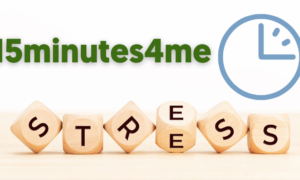Before computers were developed, people used sticks, stones and bones as counting tools. As technology advanced and the human mind improved over time, more computing devices such as the abacus, Napier’s bones, etc. were developed. These devices were used as computers to perform mathematical calculations, but not very complex.
Some of the popular computing devices are described below, ranging from the oldest to the latest or most advanced technology developed:
Abacus
About 4000 years ago, the Chinese invented the abacus, and it is believed to be the first computer. The history of the computer begins with the birth of the abacus.
Structure: Abacus is basically a wooden rack consisting of metal rods on which beads are attached.
Function of Abacus: In abacus, beads were moved by the abacus operator according to certain rules to perform arithmetic calculations. In some countries such as China, Russia and Japan, their people still use the abacus.
Visit here clynerr.com
Napier’s Bones
The Napier Bones was a manually operated calculating device and as the name indicates, it was invented by John Napier. In this device, he used 9 different ivory strips (bones) marked with numbers to perform multiplication and division for calculations. It was also the first machine to use the decimal point system for calculations.
Pascaline
It is also called arithmetic machine or adding machine. Blaise Pascal, a French mathematician-philosopher, invented it between 1642 and 1644. It was the first mechanical and automatic calculator. It was invented by Pascal to help his father, a tax accountant, in his work or calculations. It can do addition and subtraction in quick time. It was originally a wooden box with a series of gears and wheels. It works by rotating the wheel such that when one wheel rotates one revolution, it rotates the neighboring wheel and a series of windows are given at the top of the wheels to give the total reading.
Stepped Reckoner Or Leibniz Wheel
In 1673 Gottfried Wilhelm Leibniz, a German mathematician-philosopher, developed this device by improving on Pascal’s invention to develop the machine. It was originally a digital mechanical calculator, and was called a stepped reckoner because it was made of fluted drums rather than gears (used in previous models of Pascaline).
Difference Engine
Charles Babbage, also known as the “Father of the Modern Computer”, designed the difference engine in the early 1820s. The difference engine was a mechanical computer capable of performing simple calculations. It worked with the help of steam as it was a steam-powered computing machine, and was designed to solve tables of numbers such as logarithm tables.
Learn more about how to clean macbook screen
Analytical Engine
Again in 1830 Charles Babbage developed another calculating machine which was the Analytical Engine. The Analytical Engine was a mechanical computer that used punch cards as input. It was able to perform or solve any mathematical problem and store the information in the form of permanent memory (storage).
Tabulation Machine
An American statistician Herman Hollerith invented this machine in the year 1890. The tabulating machine was a mechanical tabulator based on punch cards. It was capable of tabulating data and recording or sorting data or information. This machine was used by the US Census in the year 1890. Hollerith’s Tabulating Machine Company was started by Hollerith and this company later became International Business Machine (IBM) in the year 1924.
Differential Analyzer
Differential Analyzer was the first electronic computer introduced in the United States in the year 1930. It was originally an analog device invented by Vannevar Bush. This machine consists of vacuum tubes to switch electrical signals to perform calculations. It was capable of doing 25 calculations in a few minutes.
Mark I
In the year 1937, major changes began in the history of computers, when Howard Aiken planned to develop a machine that could perform large numbers of calculations or calculations. The Mark I computer was created in 1944 as a partnership between IBM and Harvard. It was also the first programmable digital computer to mark a new era in the computer world.
Generation Of Computers
First Generation Computers
In the period 1940–1956, it was referred to as the period of the first generation of computers. These machines are slow, huge and expensive. In this generation of computers, vacuum tubes were used as the basic components of the CPU and memory. Furthermore, they mainly relied on batch operating systems and punch cards. Magnetic tape and paper tape were used as output and input devices. For example ENIAC, UNIVAC-1, EDVAC, etc.
Second Generation Computers
The period 1957-1963 was known as the period of the second generation of computers. This was the era of transistor computers. Transistors (which were cheaper in cost) are used in the second generation of computers. Transistors are also compact and consume less power. tr
Auxiliary computers are faster than first generation computers. For primary memory, magnetic cores were used, and for secondary memory magnetic disks and tapes were used for storage purposes. In second generation computers, COBOL and FORTRAN are used as assembly language and programming languages, and batch processing and multiprogramming operating systems are used in these computers.
Third Generation Computers
In third generation computers, integrated circuits (ICs) were used instead of transistors (in the second generation). A single IC consists of multiple transistors which increase the power of the computer and also reduce the cost. Third generation computers are more reliable, efficient and smaller in size. It used remote processing, time-sharing and multiprogramming as operating system. FORTRON-II to IV, COBOL, and PASCAL PL/1 were used which are high level programming languages.
Fourth Generation Computers
The period 1971–1980 was primarily a time of fourth generation computers. It used VLSI (Very Large Scale Integrated) circuit. VLSI is a chip which contains millions of transistors and other circuit elements and because of these chips, computers of this generation are more compact, powerful, faster and economical (low cost). Real-time, time-sharing and distributed operating systems are used by these computers. C and C++ are used as programming languages in this generation of computers.
Fifth Generation Computers
These computers are used from 1980 till today. ULSI (Ultra Large Scale Integration) technology is used in fifth generation computers instead of VLSI technology of fourth generation computers. Microprocessor chips with ten million electronic components are used in these computers. Parallel processing hardware and AI (Artificial Intelligence) software are also used in fifth generation computers. Programming languages like C, C++, Java, .Net, etc. are used.











































